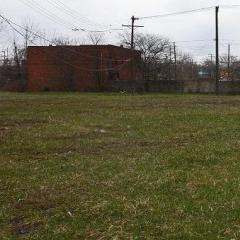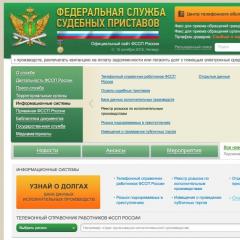VAT for dummies: Description Simple words
About value added tax heard every person, because it is indicated on any purchases checks. The string "price including VAT" is perceived by citizens of Russia as an integral element.
When people who do not have financial or accounting education are starting to be interested in the meaning of this check mark, they face difficulties of understanding value added tax. This situation is natural, since VAT is the most difficult payment from all sides. Even income tax system is absorbed faster.
 Prior to the development of VAT in the economic systems of countries, a tax of turnover was used - similar to the principles of payment. It was applied for the first time in Germany in 1916.
Prior to the development of VAT in the economic systems of countries, a tax of turnover was used - similar to the principles of payment. It was applied for the first time in Germany in 1916.
A large disadvantage of the current tax was a cascade effect, i.e. Costing at each stage of production and sale, which encouraged enterprises to develop their own materials for the further manufacture of finite products. Such internal production was cost-effective than buying components and materials from external suppliers.
In order to get rid of the effect of the cascade and vertical integration of firms, the French economist and the financier Maurice Lore created in 1954 a completely new fiscal payment - VAT. The tax feature was invented by Mr. Lore, VAT test, i.e. Removing the tax load of the supply chain and transfer it on the following buyers at the resale stages. As a result, along the theory of Lore, the final price of the product implemented by consumers will be significantly lower.
Testing
As an experiment, the tax was introduced on the territory of Côte d-Ivoire, the French colony of that period. Having received positive statistics, the authorities of France after 4 years, in 1958, approved VAT in the territory of their country.
After France, the tax began to spread in European states. In 1977, the European Economic Community adopted the Directive on the codification of the legal regulation of VAT in all countries of the association. This directive approved the prerequisite for membership in the EEC, the presence of value-added tax in the country's economy. Enter the tax required until 1988.
Modernity
To date, VAT is the main indirect tax in the world. To participate in the World Trade Organization, the state requires a tax into the economy. The same condition has been preserved in the European Union.
Among developed countries, only the United States does not apply VAT, but continue to operate on sales tax at the retail stage.
Despite the optimal solution to the issue of the Cascade, VAT has its shortcomings, the most important of which are high demands on tax reporting, its administration and the possibility of corruption by the tax system bodies, since the difficult accrual mechanism creates speculative conditions.
The VAT was not introduced in the USSR, the Soviet system established in 1930 on the territory of the unification of a fixed turnover tax, which operated to the collapse of the Union. The Government of Russia, having time to unify tax legislation into a single regulatory act, used a differentiated system from separate laws for each fiscal payment.

VAT began to act in Russia in 1992 by law 2813-1. After a decade, in 2002, the second part of the Tax Code of the Russian Federation has gained legal force, including Chapter 21 - "Value Added Tax".
Concept and components
VAT is the most difficult tax for calculating. However, if you figure out the theory of its mechanism, the calculus will be perceived much easier, although compliance with all the subtleties will always remain one of the key difficulties of payment.
VAT, as indicated in the title, is charged on the increase in value when the goods transition from one enterprise to another in manufacturing and sales processes. Each chain link adds cost to the product, including costs - depreciation, employee wages, transportation, advertising, etc. As a result, VAT is subject to added product value, as there is a constant taxation of the tax between suppliers and buyers.
 For example, the company "A" acquired materials from the company "b" for the manufacture of wooden furniture in the amount of 100 thousand rubles. The manufactured product company "A" has implemented 200 thousand rubles. The revenue of the company "A" is used to calculate VAT. The cost of buying from the company "B" is VAT to deduct.
For example, the company "A" acquired materials from the company "b" for the manufacture of wooden furniture in the amount of 100 thousand rubles. The manufactured product company "A" has implemented 200 thousand rubles. The revenue of the company "A" is used to calculate VAT. The cost of buying from the company "B" is VAT to deduct.
Remove from the total cost of 18% of the paid tax: 100000 * 18/118 \u003d 15250 rubles. The outgoing VAT is the tax that the company "A" should be paid to the state treasury is: 200000 * 18/118 \u003d 30500 rubles. After the input tax deduction, the company lists: 30500 - 15250 \u003d 15250 rubles.
Thus, the entrepreneur has the right to reduce its tax base to the amount of VAT, which was laid in the value of the acquired materials. Such a test is made by all the chain links, except for the final buyer - it acquires goods with tax included in it, this is the line "Price including VAT". In fact, VAT is charged from expenses, as it falls on direct consumers, and the organization recognized by the payer is only a tax agent - lists the tax from consumers, ordinary citizens to the budget.
Structure
Like all Russian taxes, VAT consists of the following structural elements:
- objects;
- taxpayers;
- base for calculation;
- rates;
- periods;
- payment;
- terms and procedures for submitting reporting and transfer of payment to the budget.
Also an important component of VAT is tax breaks.
Who pays
Tax payers are standard individuals and legal entities:
- enterprises;
- entrepreneurs.
All subjects of VAT on the territory of activity are divided into:
- domestic payers engaged in the country within the country;
- external payers performing imports to Russia.
Those business units that have not implemented goods and services more than 2 million rubles for three consecutive months have the right to submit to the Inspectorate of the Federal Tax Service at the placement of the notice and receive in response to exemption from the obligations of the VAT payer under Article 145 of the Tax Code.
The form of notification was adopted by order of the Ministry of Taxes and Fees in 2002. As a result, VAT does not pay the following categories of physical and legal entrepreneurs:
- uBD payers;
- eschn payers;
- using USN;
- using PSNs;
- participating in the innovative project "Skolkovo";
- no revenue more than 2 million rubles.
More information about the amount of payment can be found in this video.
Types and bets
For VAT taxation in Russia, a percentage of bids are used.
Article 164 of the Code approve the following tax rates.
0%
- export of goods;
- international transport of goods;
- transportation, overload and transshipment of oil through pipelines;
- gas transportation in pipelines;
- supply of electricity for a single power grid from Russia to foreign countries;
- storage and transshipment in the river and seaports of goods, the point of departure of which are foreign countries;
- cottage to carry out the transport of railway rolling stock;
- export of goods on river and marine vessels;
- sale of hydrocarbons whose mining is produced in the marine area of \u200b\u200bRussia;
- transportation by air transport sent to foreign territory;
- transportation of baggage and passengers to foreign countries;
- transportation of baggage and passengers to Sevastopol and the Republic of Crimea;
- sale of goods of space (technique, infrastructure facilities);
- sale of precious stones and metals by state funds, the Bank of Russia;
- etc.
The full and detailed list of zero rates payers is given in paragraph 1 of Article 164 of the Code.
10%

18%
- all other types of implementation and exports.
Exports of goods are charged under the last two rates, depending on the classification of imported goods to the listed categories.
What is subject to and what not
Taxation object is the basis, the cause of the tax duty.
In the case of VAT, these are four types of action. If the face makes them, the FNS incriminates it to the payment of tax:
- Sales (sale of goods, provision of services, work, transfer of goods under express and innovation agreements (replacement of monetary obligations of transmission of other property in exchange), transfer of property rights).
- The transfer of goods for their own needs is the actual posting of goods, services or works between the structural departments of the enterprise and the inability to reduce the base for income tax on the amount of the cost of production of these goods.
- Construction and installation work for your own needs.
- Export goods.
Not included in VAT objects:
- transfer of residential real estate, infrastructure elements by state authorities for gratuitous principle;
- the transfer of property of the federal and municipal levels in the process of privatization;
- the work of state institutions, the obligation of which they are approved by law;
- provision of property in the form of fixed assets of state authorities for the gratuitous principle;
- sale of land and shares of land;
- transfer of property and cash for education or filling target capital NPOs;
- currency operations;
- investment deposits into authorized capital;
- confiscation of property;
- inheritance;
- transfer of residential real estate from the State and Local Fund to individuals;
- dr. Actions under articles and code.
Payment
The standard situation is used for calculation value reflection of objects, for example, the cost of work imported goods.
For payment, it is required to determine the tax from revenue, incoming tax, in some cases - tax on recovery.
The recovery is subject to VAT, which tax authorities reimbursed the person, but circumstances arose, depriving him of the right to compensation, therefore, the person needs to return VAT to the budget.
In the ultimate cost of goods, VAT is already located - even if the business entity does not actually laid its size in the sale price, the legislator believes that the value includes a tax. How to remove VAT from formed cost? Multiply the amount per 18% is not enough, as the share of costs with the same VAT will be obtained.
For calculation is used fraction 18/118. - That is how the tax laid is determined. it estimated rateused when:
- payment of goods from Article 164 - Discounts, Risk Insurance, etc.;
- obtaining an advance for future supplies;
- calculation, retention and payment of VAT by tax agents.
General formula VAT to pay:
cost of goods * 18/118
If the organization applies deduction of entrance tax, then:
the cost of goods sold * 18/118 - the cost of purchased goods * 18/118
If VAT is not included in the price, then for calculation:
base * Bet

Example 1.
The company "Books" deals with the sale of book products for higher educational institutions through a retail network at a price of 100 rubles per book. For the quarter, 500 copies were sold.
She has its own paper manufacturing workshop for books that are transmitted to another division of the company - a printing house, for the quarter, materials are transferred in the amount of 20 thousand rubles (without VAT). The object is - the sale of goods and the transfer of goods for their own needs.
Payment:
- revenue for the quarter: 100 * 500 \u003d 50,000 rubles;
- we highlight from VAT price (because it is included in the final cost): 50000 * 18/118 \u003d 7627 rubles.
Transmission cost for own consumption: 20000 * 0.18 \u003d 3600 rubles.
VAT to pay: 7627 + 3600 \u003d 11227 rubles.
Results:
- the cost of implementation with VAT - 50,000 rubles;
- without VAT - 42373 rubles;
- transfer from VAT - 23600 rubles;
- without VAT - 20,000 rubles;
- budget tax - 11227 ruble.
Example 2.
The company provides translation services. For the tax period, services were provided in the amount of 40,000 rubles every month without VAT.
Payment:
- Revenue for the quarter: 40000 * 3 \u003d 120000 rubles without VAT.
- VAT: 120000 * 0.18 \u003d 21600 rubles.
- Cost with VAT: 120000 + 21600 \u003d 141600 rubles.
Methods of accrual and payment
VAT is calculated according to the standard scheme "Production of the base at the rate". When working in several modes, for example, the OSE is also a separate accounting and the calculation of the tax in accordance with the share of activities on the general system.
The total amount of VAT is equal to the amount of taxes on all taxable operations for the entire tax period - a quarter. The amount of tax is calculated by the company independently. The payment of VAT is produced in the 3 stages during the quarter - until the 25th day of each month.
Reporting
 According to the latest changes in the tax legislation, taxpayers are reported to the FNS inspections on electronic communication channels.
According to the latest changes in the tax legislation, taxpayers are reported to the FNS inspections on electronic communication channels.
In the case of VAT, enterprises need to submit a declaration. The updated declaration form is represented by the order of the FTS in 2014.
In the new form added sections in which you want to designate information from and books and purchases. Such changes in the order of filling gave tax inspectors the opportunity to check amounts of goods and services between counterparties - buyers and sellers. Such reconciliation allows you to find inconsistencies and an unlawful application for deductions.
The declaration is rendered upon completion of each tax period - until April 25, July 25, October 25 and January 25. In the current year, these dates do not fall on weekends and holidays, therefore, the reporting is required until the specified days.
Tax deductions
You can reduce the calculation database for the following amounts:
- VAT filed by contractors, suppliers, performers;
- VAT paid when exporting for processing, temporary export, internal consumption;
- VAT paid when exporting.
Conditions for deduction:
- calling goods;
- availability .
The invoice is drawn up along with other accounting reporting by the Contractor of the contractual obligations. Since 2015, the rules of its design and presentation did not occur.
Innovations
Since the beginning of the year, numerous transformations in tax legislation entered into force, including VAT:
- submission of explanations for errors and inconsistencies in the VAT Declaration is carried out only in electronic form;
- for a simplified and rapid procedure for reimbursement of VAT, the period of bank guarantee is increased to two months;
- from July 1, users of municipal and regional subsidies are required to restore VAT;
- online taxation includes Internet services for foreign companies.
Simple words about VAT can be found from this lecture.


